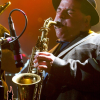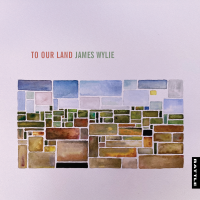Home » Jazz Articles » Profile » Al Harewood
Al Harewood
 Listening to drummer Al Harewood speaking about his life in jazz is like opening a secret chapter in a special history book filled with wondrous swinging grooves and illustrious personalities. Harewood turns 83 years old this month, but he has an acute memory, and speaks with a voice that is both powerful and inspirational.
Listening to drummer Al Harewood speaking about his life in jazz is like opening a secret chapter in a special history book filled with wondrous swinging grooves and illustrious personalities. Harewood turns 83 years old this month, but he has an acute memory, and speaks with a voice that is both powerful and inspirational.Born June 3rd, 1923 in Brooklyn, where he currently resides, as a child Harewood was a gifted tap dancer who gave recitals and was affiliated with Bill "Bojangles" Robinson's school of dance. His older brother, Eustace—his first real influence on drums—was the first drummer in the Harewood household. Eustace, however, was drafted into the Second World War and thus left the 'house' drums unoccupied. After contracting pneumonia as a child, at the Army physical the younger Harewood was declared unfit for military duty. And this was the beginning of a fine and illustrious career-to-be as a jazz drummer.
While working at a munitions armory during the war, Harewood taught himself the drums and found an uncommon aptitude for playing the traps with fire and swing. His brother was devastated by his younger brother's ability and growing potential as a drummer when he returned home after the war and both he and drummer Arthur Edgehill subsequently started recommending the prodigy—who had begun listening to the major percussion innovators of the time: Max Roach, Art Blakey, Philly Joe Jones and the new bop stylings of Kenny Clarke—for club dates around New York. Learning to play very melodically with rhythmic punches, Harewood quickly became an expert at feeding and supporting each soloist while never getting in the way of a horn player's melodic development.
It was at the Putnam Central Club, where Edgehill was working with Dinah Washington, that JJ Johnson first heard Harewood and asked him to join the great J (as in JJ) and Kai (Winding) two-trombone group (rounded out by pianist Dick Katz and bassist Peck Morrison) that later made jazz history. Miles Davis came into the club one night and could only shake his head in wonder at the young Harewood's astonishing grooves. It was during this time Harewood especially was influenced by Art Blakey, particularly his cymbal work. As a matter of fact, on one occasion when Blakey was late for a Charlie Parker gig, Harewood happened to be on the scene and stepped in to play, quickly amazing Bird.
After Johnson's group broke up, Harewood became part of the rhythmic foundation for such jazz luminaries as Stan Getz, Carmen McRae, Mary Lou Williams, the Curtis Fuller-Benny Golson Sextet, Stanley Turrentine, Shirley Scott and Grant Green, to name a few. His trio record with Grant Green on Blue Note, Green Street (1961), shows his ultimate sensitivity with brushes and his light, tasty stick work. Another 1961 recording, also for Blue Note, Dexter Gordon's Doin' Allright, is a proven masterpiece of Harewood's groove, along with sensational bassist George Tucker.
The great drummer's performances also range from the Newport Festival All-Stars to new jazz premiers and classical works by David Amram with the Brooklyn Philharmonic. He also became an adjunct instructor at the Livingston College of Music at Rutgers University, where he taught drums and percussion.
In 1987 I actually had a piano trio with Harewood and the amazing bassist Cecil McBee. As a young pianist, I had to keep up with the two jazz masters, and when I called "Ain't Nobody's Business", the two laughed at "the old chestnut" but played it with daring and the utmost respect for the blues. In the late '80s, Harewood created some beautiful explorations, playing into the outer harmonic and rhythmic realms of avant-garde jazz with altoist Lee Konitz, bassists Lisle Atkinson and Rufus Reid and pianist Harold Danko. What amazes is how a straight ahead player could sound so contemporary. Harewood knows and can play the whole history of the drums.
In his opinion, one of his most important collaborations in the '80s and early '90s was with the seminal Charlie Parker Memorial Quintet—a group which toured Japan and the States—with Bird's eloquent pianist Walter Bishop, Jr. as leader and bassist Paul Brown. Around the same time period, he also worked with altoist Benny Carter as well as with Toshiko Akiyoshi.
His parents come from Barbados but he and his late wife Geri now own the house there, which is where he often escapes to the sun during New York's tough, icy winters. I was fortunate enough to catch him still in the city, being that he recently recovered from a once serious illness. Maintaining a wonderful sense of humor, dignity and courage as one of the original creators of modern jazz drumming, Al Harewood is present in New York's clubs each and every night at the very least in spirit if not influence. In parting, he encouragingly said, "One of these nights I might just drop in and hang out with all the cats."
Recommended Listening:
· Curtis Fuller - Blues-ette (Savoy, 1956)
· Stanley Turrentine - Up at Minton's, Vol.1&2 (Blue Note, 1961)
· Grant Green - Idle Moments (Blue Note, 1963)
· Betty Carter - At The Village Vanguard (Verve, 1970)
· Lee Konitz - Ideal Scene (Soul Note, 1986)
· Toshiko Akiyoshi - Remembering Bud: Cleopatra's Dream (Ninety-One - Evidence, 1990)
Photo Credit
Joseph E Rybczyk
Tags
PREVIOUS / NEXT
Support All About Jazz
 All About Jazz has been a pillar of jazz since 1995, championing it as an art form and, more importantly, supporting the musicians who make it. Our enduring commitment has made "AAJ" one of the most culturally important websites of its kind, read by hundreds of thousands of fans, musicians and industry figures every month.
All About Jazz has been a pillar of jazz since 1995, championing it as an art form and, more importantly, supporting the musicians who make it. Our enduring commitment has made "AAJ" one of the most culturally important websites of its kind, read by hundreds of thousands of fans, musicians and industry figures every month.
























